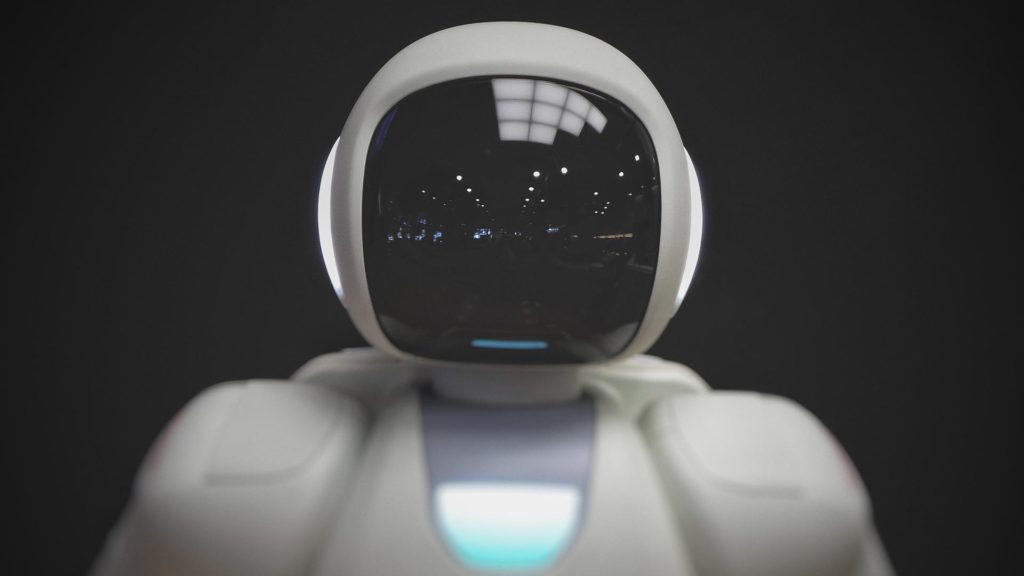Is The Coronavirus Causing More Companies To Consider Automation?
As the Coronavirus sweeps across the globe, and millions of people are suddenly unemployed, or underemployed, while unemployment insurance claims skyrocket like never before, many manufacturers are ramping up automation as a solution to social distancing that many of us are required to perform, as we all try to flatten the curve of the spread of COVID-19. As such, this is leaving many who are suddenly unemployed, asking, “will I even have a job to return to, after this is all over?”.
First, let’s address the fact that automation hasn’t just been on the horizon, it’s actually been here for a long time. Don’t believe us? The next time you visit a grocery store, and you choose the automated checkout, well, that’s automation. Another example; the next time you call customer service, and you’re prompted by an automated operator to get your information before you reach a real, live person, that’s also automation.
Automation comes in various forms, shapes, and sizes, and certainly isn’t limited to tangible interactions with automaton robots. Automation can appear in the form of a voice over the phone, or even a chat bot on a website. Even AI (artificial intelligence) is a form of automation. The thing is, automation has been with us for well over a decade, and it’s only going to continue ramping up, and integrating into our society (whether we like it or not). Even more so, now, thanks to the Coronavirus pandemic. In fact, the timetable for mass automation implementation in repetitious jobs has been drastically pushed up. Before, many economists had expected such a massive paradigm shift to occur within the next 5 – 10 years (conservatively speaking). Now, due to the sweeping pandemic of the Coronavirus, many manufacturers, farmers, couriers, supermarkets, and even restaurants are suddenly looking to automate as many of those positions as possible, as a way to not only weather this storm, but to effectively make the transition into automation with as little friction as possible.
The thing is, automation isn’t a bad thing, like so many believe it to be. Automation is just a tool, like a jackhammer, or a crane, or an excavator, or even a car. At one point in time, we, as a species, managed life without the use of such innovative tools & resources. And let’s be honest, during those antiquated times, life was pretty miserable for a lot of people. The introduction & integration of these innovative tools & resources made it possible for our global society to transition into a more civilized world, while subsequently helping to bolster our respective economies, and qualities of life, (although not everyone benefits from such innovations, but we’ll leave that to for another time). Automation is no different. It’s a tool used to meet the consumer demands of a growing, global population. Our world is currently inhabited by approximately 7.6 Billion People. That’s “Billion” with a “B”. People need food, clothes, clean water, soap, transportation, communication, and entertainment to make it through this life with as little friction as possible. Automation makes it possible to not only meet these high demands, but also helps to streamline manufacturing, reducing human error, and subsequently human liability, while simultaneously helping to speed up the production & distribution of goods, services, and essential resources (especially during a time like we’re all currently experiencing).
Unfortunately, like many technological innovations of their time, which contributed to the paradigm shift in countless cultures and countries around the world, automation will have a similar impact on jobs & employment. This leaves many people asking (and rightfully so), “what’s left for me to do, if my job has been automated away?”.
What Will I Do For Work?
A pertinent, and absolutely relevant question to ask, when it comes to automation, “what will I do for work?”. That, right there, is the Billion Dollar question. Many economists have been scratching their heads to determine what will humans do if their jobs are automated away. And no, it’s not realistic (in fact, it’s reductive) to suggest everyone learn to code as a solution to the employment problem. As a matter of fact, even coding will eventually become more and more automated, as digital tools and resources for coding become much more intuitive, hands-on, and streamlined.
Our economy is only as good as our weakest consumer, and only as resilient as employment opportunities allow it to be. In the United States, our measurements for GDP (Gross Domestic Product) are based on a two-part measurement. It’s not just about how many people are working. It’s also about how many people are purchasing; CSP (Consumer Spending Power). How many people have disposable revenue, and subsequently are buying products, services, resources, and essential items. How many people are going on vacations, and going to the movies, and concerts, and events. If no one has a job, then no one has disposable revenue. If no one has disposable revenue, no one is buying. If no one is buying, our economy collapses. And with no one working, how will anyone make money? How will anyone pay for rent, mortgages, food, clothes, education, etc…? Sound familiar? Yeah, those are the same questions that those who’ve been laid off, have been asking, due to the Coronavirus.
The thing is, the Coronavirus is having the same impact on our economy that widespread automation was going to have. The only difference between the Coronavirus & Automation is that the Coronavirus causes COVID-19, and can actually kill people. It also ravaged across the globe in a matter of months, rather than a decade of slow integration.
While doctors, nurses, CNAs, epidemiologists, scientists, and technologists are all working diligently to help fight the spread of the Coronavirus, and subsequently COVID-19, economists, on the other hand, are trying to solve a different problem, with rampant unemployment on the rise, like the world has never seen before.
In a span of just 13 days, based on new data from the DOL (Department of Labor), some 6.6 Million Americans have already filed for unemployment benefits due to a loss of employment, as a result of shelter-in-place orders by state & federal authorities, to help slow the spread of COVID-19. And that number doesn’t seem to be decreasing anytime soon.
Where Do We Go From Here?
So where do we go from here? The answer to that question is contingent upon how our respected local, federal, and international governments choose to navigate this unprecedented pandemic. The good news is that, unlike in the past, when the world wasn’t nearly as connected as it is today (thanks to the internet, smart phones, and social media), many individuals, businesses, and other entities aren’t waiting for government aid, and instead are stepping up to provide the necessary resources and opportunities to help those in need during this trying time, whether that’s providing tools, training, and other educational resources to expand the repertoire of workers’ & students’ skills needed to overcome this crisis, and thrive as a result. Others are propping up economic relief efforts to help weather the subsequent economic catastrophe due to the Coronavirus.
At the end of the day, it’s important to realize, and truly understand that you’re not alone during this time of strife. And more importantly, realizing that we are going to be okay. We’re going to overcome this. Now, more than ever, we all need to come together, as a community, as a society, as a people, as a species, and coalesce for the betterment of all.
Be kind to one another, help each other, and we can beat this thing together.



